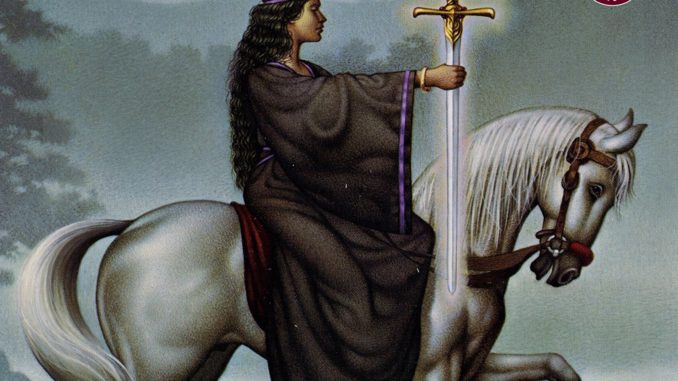
The saga of King Arthur Pendragon has been a well-known fable since the 5th century, and has successfully permeated itself into the fabric of fantasy literature. Indeed, “Arthurian fantasy†is its own distinct subgenre of fantasy. It was constantly masculine-centric, revolving around Arthur, Lancelot, and the rest of the Knights of the Roundtable, with feminine characters such as Guinevere and Morgan La Fey left as more minor characters or one-dimensional villains, respectively. In 1983, Marion Zimmer Bradley decided it was high time for the story to be expanded upon. Thus, “The Mists of Avalon†epic was born.Â
Retold from the point of view of various female characters, and with said character being given far more complexity than in typical writings, “The Mists of Avalon†centers around the clash between the leaders and inhabitants of the mystical land of Avalon, hidden in dense mists, and those of the “real world of men†of Britain. Concurrently, it is a high drama between contending cultures as well as religion, with geopolitics being a consistent factor. Throughout the book, the reader sees the conflict between past, present, and future woven into the personal relationships of various important characters, with the heart of Britain herself at stake.
The tome primarily centers around five female characters, being Morgaine(Morgan La Fay), Igraine, Gwenhwyfar (Guinevere), Viviane (Lady of the Lake), and Morgause, whose roles as protagonists and antagonists could be accurately regarded as being rotating plot points. The reader is allowed to root for their own heroes and jeer for their own villains, as neither Camelot nor Avalon is given any true preferential treatment. Each of the aforementioned ladies, as well as a multitude of other familiar male and female characters, play their part in scheming and battling for the power of their respective allegiances. One of the most distinctive differences between this and most other retellings of the Arthurian saga is the treatment of Morgaine. Whilst typically portrayed as a straight-forward villain who despises Arthur out of jealousy, in this she is granted far more substance and truly humanizing characteristics. Indeed, rather than the villain, she’s much more of a tragic hero, trying to perpetuate her own cultural heritage of the priestesses of Avalon and paganism in the face of the growing tide of Camelot’s war-making and Christianity. Standing as her polar opposite is High Queen Gwenhwyfar, wife of Arthur Pendragon, acting in the name of Christianity in fearful opposition of “evil sorceryâ€. With the others each having their own distinct roles in the generation encompassing sociopolitical intrigue, the plot is deliciously complex while restraining itself from unnecessary density.
A primary flaw in this book is its seeming assumption that the reader is already well-versed in both Arthurian lore specifically and British Isles legends in general. Without an underlying knowledge of the story beyond simply “King Arthur gets Excalibur, Lancelot betrays him, The Endâ€, the reader may find themselves to be a bit lost in the mist.
Truly an excellent addition to the fantasy section of any library, “The Mists of Avalon†is a beautifully rendered retelling of Camelot that should certainly delight fans of both the Arthurian subgenre and fantasy in general itself. It’s poetically written without suffering from pretentiousness and offers layers of character-driven complexity that deftly weaves a tale that begs to be read and reread. Truly a delightful literary adventure.

Leave a Reply